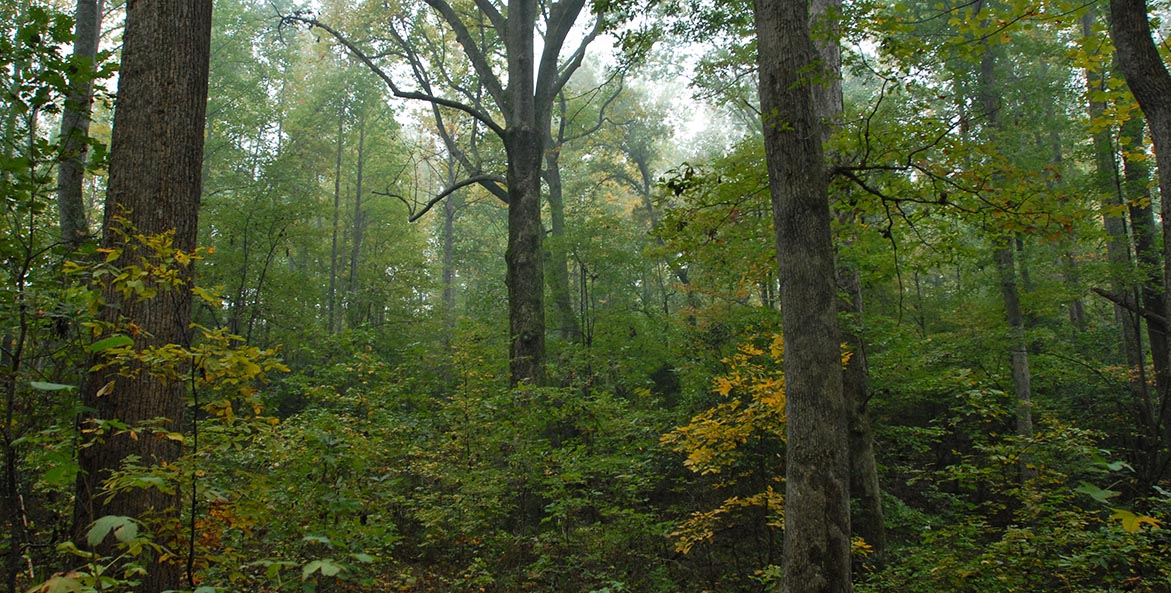Charles County is threatening to blaze its own trail when it comes to updating its forest protections—a trail that could leave more deforestation in its wake.
The county’s planning commission is currently reviewing a bill that would decrease forest conservation thresholds and lessen tree replanting requirements, even though the stated goal of the bill is to “minimize the loss of forest in Charles County during development.”
If the county moves forward with this bill as written, it will put Charles County on a different course than counties such as Frederick, Anne Arundel, and Howard, which recently strengthened forest protections. Approving the bill as is would also be counter to Charles County’s long-term Comprehensive Plan, which calls on county leaders to “conserve large tracts of contiguous forestland.” The plan even offers a specific prescription for how to do it.
Instead, the changes in the bill would enable developers to clear more forested land and enable them to replant less trees when building new developments. We’re urging the county to amend the bill to fix these major issues that could accelerate tree loss in southern Maryland.
Already, the county is among the state’s leaders in forest loss. From 1997 to 2009, Charles County lost 13,200 acres of forest cover. Since 2009, the county has ranked third in forest loss, according to local annual forest conservation reports and high-resolution data from the Chesapeake Bay Program.
Despite this unenviable record, the county’s proposed bill calls for reducing the already low forest conservation expectations for medium density residential projects as well as slashing tree replanting requirements when developers choose to plant off-site. The bill doesn’t call for increasing the current replanting or conservation expectations in any of the county’s zoning types.
To improve the bill, CBF is asking county leaders to amend the current expectations for forest conservation, which range from 15 to 50 percent of a project site, to thresholds of at least 40 to 60 percent. These increased thresholds would enable the county to preserve contiguous forest and important wildlife habitat, according to analysis of peer counties. We’re also asking that the bill include increased replanting ratios and would like the county to consider a 1:1 replanting ratio for all projects. A 1:1 ratio means a developer must replant every acre of forest they remove for a project.
Earlier this year, Frederick County put in place a 1:1 ratio and Carroll County has had the policy in place for decades. This strong and easily understandable measure ensures no net loss of forested land.
Stronger forest conservation policies do not stifle economic development. Carroll County has experienced significant growth since putting its policy in place in the mid-90s. Those stronger protections, however, will help insulate Charles County against climate change and improve water quality in the region.
Forests provide numerous benefits when preserved. The trees, other vegetation, and soil that make up a forest filter chemicals and excess nutrients from water as well as harmful air particles such as sulfur dioxide. What’s more, they increase property values, reduce energy costs, provide clean air and wildlife habitat, and improve public health. And forests’ ability to reduce carbon dioxide also helps fight climate change.
Charles County has a head start in ensuring its future residents can enjoy its forests—about 55 percent of the county’s land is forested. But as climate change alters how our environment responds to storms and increasing levels of pollution, now is not the time to reduce forested land. We hope Charles County leaders will amend this bill with stronger forest protections as they review the proposed policy this fall.
Erik Fisher, CBF Maryland Office Assistant Director and Land Use Planner



